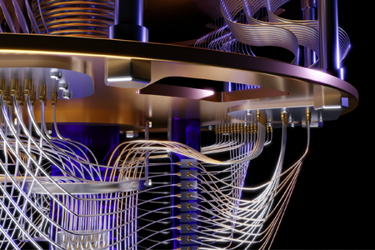The Pros And Cons Of Quantum Communication

By John Oncea, Editor

Quantum computing, sensing, and communication synergize, leveraging quantum mechanics for advanced data processing, detection, and secure transmission, enabling powerful applications across industries.
Quantum computing, quantum sensing, and quantum communication are all branches of quantum technology that interact by leveraging the unique properties of quantum mechanics to process information, detect subtle environmental changes, and securely transmit data, respectively.
Quantum communication can be used to connect quantum computers and sensors, enabling distributed quantum computing and highly sensitive data transmission through entanglement, where the state of one quantum particle instantly affects another, even when separated by distance.
All three technologies, according to Boston Consulting Group, utilize quantum phenomena like superposition and entanglement, often using similar hardware platforms like trapped ions or photons, allowing for potential integration and development synergies. Quantum communication acts as the backbone to connect quantum computers and sensors across large distances, creating a quantum network that can facilitate distributed quantum computing and advanced sensing applications.
This quantum symbiosis can be exemplified in medical imaging where a quantum sensor detects subtle changes in a biological system, and a quantum computer analyzes the data for early disease detection, with the results securely transmitted via quantum communication.
Or in precision navigation in which quantum sensors detect minute changes in gravitational fields, with the data processed by a quantum computer and transmitted securely through a quantum network for highly precise navigation systems.
Quantum Defined
Quantum computing, quantum sensing, and quantum communication are interrelated fields that leverage quantum mechanical principles to enable novel capabilities. They work together as complementary technologies, each enhancing the performance of the other.
Quantum networks can interconnect quantum computers, enabling distributed quantum computing with greater computational power, notes Nokia. This results in insights derived from complex data harvested by quantum sensors that are fed to quantum algorithms processed by quantum computers, all taking place in secure communications channels.
To accomplish this, writes NIT Technology Review, all three technologies rely on common quantum phenomena including:
- Superposition: This allows quantum bits to represent multiple states simultaneously, enabling parallel processing in quantum computers and secure key distribution in quantum communication.
- Entanglement: This is used in quantum sensing to achieve high-precision measurements and in quantum communication for the teleportation of quantum states.
The combination of these technologies enables powerful new applications such as quantum internet, a global network connecting quantum computers, sensors, and communication systems; distributed quantum computing, using quantum networks to link multiple quantum processors for increased computational power; and secure sensor networks, quantum-encrypted communication of sensitive sensor data for applications like military surveillance.
The relationship between quantum computing, quantum sensing, and quantum communication is synergistic with advances in one area often benefiting the others. For example, improvements in quantum error correction benefit both quantum computing and communication. Or quantum repeaters designed for communication networks also serving as interfaces between quantum computers.
Pros And Cons Of Quantum Technologies
As these technologies mature, their integration is expected to unlock transformative capabilities such as the enhancement of weather forecasting, the creation of secure global communication networks protected by quantum encryption and powered by quantum repeaters, and the development of quantum sensing networks for applications like high-precision navigation or early warning systems, secured by quantum communication and analyzed using quantum computing.
That said, while quantum sensing, quantum computing, and quantum communication offer significant advantages over their classical counterparts, they also come with challenges. According to RoboticsBiz, quantum sensors can detect extremely small signals or changes in physical quantities with greater precision than classical sensors while providing exceptional measurement accuracy by exploiting quantum phenomena to minimize uncertainties.
They also can discern finer details and smaller increments in measured quantities, detect both weak and strong signals without saturation, and many quantum sensors can measure properties without significantly altering the measured system.
On the other hand, according to McKinsey Digital, the extreme sensitivity of quantum sensors makes them susceptible to environmental interference and their complexity makes them more difficult to operate and maintain than classical sensors.
Currently, quantum sensors are more expensive than traditional sensors and the large, complex datasets they generate can be challenging to interpret.
As for quantum computing, the pros begin with the exponential processing power they provide, allowing them to solve certain problems faster than classical computers. In addition, they excel at optimization problems which are crucial in many industries, as well as possess the ability to simulate quantum systems, potentially revolutionizing drug discovery and materials science.
On the downside, quantum computers are highly susceptible to errors due to decoherence and noise, currently have a limited number of qubits which restrict their practical applications, and are not universally superior to classical computers and are best suited for specific types of problems. Finally, quantum computers are extremely expensive to build and operate, requiring specialized environments.
The last piece of the quantum puzzle – communication – brings with it enhanced security with quantum key distribution (QKD) offering theoretically unbreakable encryption, writes the Center for Strategic & International Studies. In addition, any attempt to intercept quantum communications is immediately detectable and the addition of quantum repeaters could enable secure long-distance quantum networks.
Some challenges associated with quantum communication include the need to implement significant infrastructure, distance limitations without the use of quantum repeaters, and numerous technical challenges that come with integrating it with existing classical networks.
As these technologies mature, their integration is expected to unlock transformative capabilities across multiple industries and scientific domains. However, overcoming the current limitations and challenges will require continued research, development, and investment.
